Spotting cholera outbreaks from space
Interview with
As well as helping us to talk to each other, gaze out into space and - as we’ll hear later - even forge new alloys and manufacture things in microgravity - satellites can also afford us a powerful bird’s eye view of what’s happening here on the Earth’s surface. And by collecting the right information, we can predict not just the weather, which we’re able to do with uncanny accuracy these days, but even complex patterns of changes in the behaviour of the land and sea that predict outbreaks of diseases. One such disease is the diarrhoeal illness cholera, which is caused by Vibrio bacteria and is currently showing a big increase in cases around the world. Thankfully, the University of Maryland’s Rita Colwell has been at the forefront of a way to spot where this is likely to happen, weeks in advance. She uses satellite images of sea temperatures, together with the colour of the water, which indicates where the plankton are that can carry cholera, to detect where the bacteria are flourishing in the water and therefore where the hotspots for subsequent cholera outbreaks are likely to be…
Rita - Satellites with the sensors that are attached can provide information about human health and advanced warning of conditions that might be adverse to human health. We have learned that there are many factors from the environment that direct or control infectious diseases. And if we're able then to measure these different factors - sea surface temperatures, chlorophyll, plant vegetation, which are all related to the infectious disease, then we are able to be forward-looking in positioning medical supplies and medical personnel and vaccines and safe water to prevent these diseases from becoming epidemics.
Chris - Is the resolution of the imaging we have good enough to do this meaningfully?
Rita - It's fascinating. When I first began using satellites, my hypothesis was that we could actually predict the risk of cholera, this was 23 years ago, we had to measure a square mile off the coast of the Bay of Bengal to correlate with the cases of cholera. Today with the very sensitive satellites, we can actually measure the temperature in the presence of chlorophyll in a square meter of water, a pond, or a river. So the sensitivity over the last two decades has been extraordinary.
Chris - Goodness. And how do you connect those measurements you're making? The temperatures, the color of the water, the greenness, the chlorophyll with a risk of a disease like cholera.
Rita - The discovery we made, which was very contentious at the time, was that the bacterium that causes cholera is naturally occurring in the environment. The bacteria play a role in carbon and nitrogen cycling and have the capacity to break down the shell of crabs and shrimp lobsters. And the biggest surprise of all was that the bacteria, just as we have bacteria that are part of our skin and in our gut, so do crabs and shrimp, and this little copepod, which is a microscopic animal that comprises a major component of the marine plankton.
Chris - You're saying that the cholera bacterium is naturally living inside those animals?
Rita - It is indeed. It's part of their natural bacterial flora, and that was very controversial first of all that the cholera bacterium is naturally occurring, because it was believed by physicians until the 1950s and 60s as an absolute dogma. That person to person transmission was how cholera occurred.
Chris - How do you link then the surface temperature of the sea, the greenness and so on, telling you that this bacterium, which is in the guts of these other animals that are also in the sea, is going to then start causing problems in people.
Rita - We were able to analyze the phenomenon that in Bangladesh in the spring and fall, there are major outbreaks and this has gone on for years. And we were able to show that by measuring by satellite, the chlorophyll plus sea surface temperature and sea surface depth, in other words the height of the seawater, which all of these factors play a role in cholera because the bacteria become very abundant when the plankton is blooming. That is when the plankton respond in the spring to the very warm temperatures of the atmosphere, the sun being brighter in the spring, and these plankton become very abundant. And so by measuring the chlorophyl, we can begin to measure, if you will, the increase in the numbers of vibrios that these bacteria that cause cholera.
Chris - So putting it together then you are saying you can see the sea surface temperature go up. You can see the plants responding and becoming more green. If there are more plants to feed more of the animals that have got the cholera bacteria, you'll get more cholera bacteria. And when you put that with a high sea surface level and a flood, you've got an opportunity for people to catch it.
Rita - Absolutely. By virtue of the flooding that occurs in the spring and following the monsoon season, these interactions of a bacteria and their host, the plankton, responding to these seasonal changes are directly correlated with the outbreaks, particularly in Bangladesh where unfortunately access to safe water is not as available as it is in western countries. When you are taking your drinking water and your household water directly from ponds and rivers, then you are really susceptible. This provides a warning system, an early warning system. And in fact, that's exactly what we provide now for Yemen and Ethiopia where they are suffering outbreaks of cholera. We are able to provide every month a four to eight week prediction of the risk of cholera and in specific geographical regions of the countries, so that a very efficient location of medical supplies and personnel that can treat cholera quickly and prevent the epidemic becoming serious and spreading. We're able then to use satellite sensing as a public health tool.
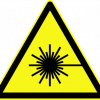
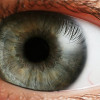
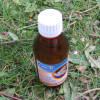
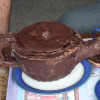
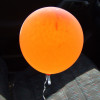
Comments
Add a comment